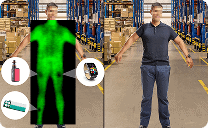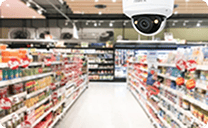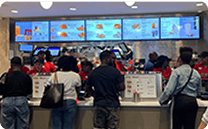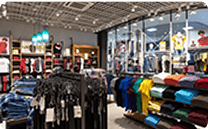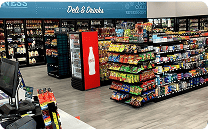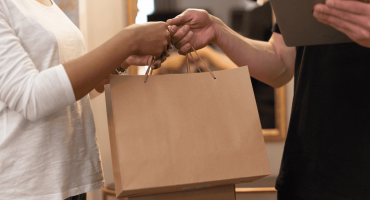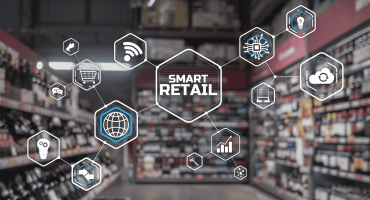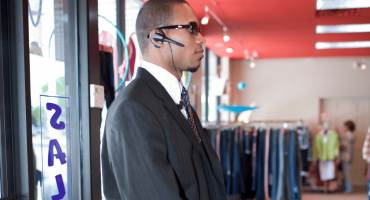In This article
Introduction: Why QSR Customer Experience Is the Competitive Frontier
Quick Service Restaurants (QSRs), better known as fast-food establishments, have long been defined by convenience and speed. Today, however, simply serving food quickly isn’t enough. The modern QSR customer experience encompasses everything from digital interactions and in-store ambiance to staff communication and personalized service. Digital consultancy Publicis Sapient states that QSRs must go beyond transactions and craft emotional connections through design, technology, and service.
Your customers’ expectations are rising, and brand loyalty is increasingly challenging to earn and retain. You must consistently deliver seamless and memorable customer experiences across whatever channels your customers choose. This guide explores best practices for enhancing QSR customer experience in ways that go beyond food and speed of service to drive participation in your QSR loyalty programs, increase sales, and build lasting customer relationships.
Holistic Experience Focus: Going Beyond the Food
To maximize your success in today’s QSR market, you need a customer experience strategy that touches every point of the customer journey, not just the meal. As digital signage software provider Pickcel notes, “customers today expect a complete, hassle-free experience.” This includes not only quick service but also intuitive interfaces, responsive customer support, and emotionally resonant brand messaging.
A well-rounded approach builds trust, enhances satisfaction, and keeps customers returning. A truly holistic QSR customer experience means you need to do four things consistently.
- Streamline the ordering process across all channels.
- Ensure consistently high food quality.
- Offer clean, safe, and inviting environments.
- Create digital and in-person interactions that feel cohesive and consistently engaging.
Recommendation: To begin, conduct a customer journey audit to identify friction points. Use customer feedback, mystery shoppers, and dwell-time analytics to uncover areas where expectations aren’t being met.
Effective Communication in QSRs: Internally and Externally
Clear communication is the key to achieving the speed and accuracy your QSR needs to succeed. Here are some details and recommendations.
Internal Communication
Frontline staff, kitchen crews, and managers must be aligned to avoid order errors and delays. Effective communication tools such as kitchen display systems (KDS), headsets, and shift management apps can help.
Recommendation: Use real-time digital dashboards to share order statuses and team updates across locations. Platforms such as 7shifts and Slack streamline internal coordination.
External Communication
Menus, signage, promotions, and mobile app interfaces must convey information clearly to reduce confusion and enhance the customer journey.
Recommendation: Use dynamic digital signage to update menus, spotlight promotions, and improve clarity. Ensure multilingual support in diverse communities, and that signage for emergency exits and evacuation routes is clear and easy to see.
Technological Integration to Enhance Experience
From self-service kiosks to loyalty apps, QSR technology plays a central role in modernizing operations and improving the QSR customer experience. Technologies that reduce friction across touchpoints are essential. Such tools can enhance operational speed and enrich customer interactions. Here are some of the most popular and useful examples.
- Self-service kiosks reduce wait times and increase average order values.
- Mobile apps enable pre-ordering, contactless payment, and delivery tracking.
- AI-powered recommendation engines personalize menu options based on past behavior.
- Real-time analytics offer insights into traffic patterns, peak hours, and menu performance.
Recommendations: Choose integrated technology stacks that enable multiple functions (POS, loyalty program, and ordering management, for example) to minimize or avoid inefficient silos. Regularly request and evaluate staff and customer feedback to optimize your technology choices’ functionality and business value.
Personalization to Build Loyalty
Personalization has moved from “nice-to-have” to “non-negotiable” in the QSR industry. QSR loyalty programs that adapt and respond to customer preferences encourage repeat visits. For example, a vegan customer could receive targeted offers for plant-based menu items. Personalized rewards, such as a free or discounted menu item on the customer’s birthday, build emotional engagement. With your customers’ consent, you can use customer data to tailor email campaigns, loyalty offers, menu suggestions, and push notifications to increase personalization and engagement.
Recommendations: Implement a loyalty platform with customer relationship management (CRM) features or integration with your CRM system to capture order histories and automate tailored offers. Use A/B testing of your offers and rewards to optimize their effectiveness.
Operational Efficiency and Speed of Service
Speed and accuracy of service are the foundations of every successful QSR customer experience. Long lines or incorrect orders quickly turn customers away, possibly for good. Here are some practical ways to improve order accuracy and speed at your QSR.
- Streamline workflows in both front- and back-of-house operations.
- Use automation for repetitive tasks, such as automatically firing frequent orders.
- Train staff to focus on efficient, friendly service, and highlight and reward top performers.
- Leverage QSR technology to forecast and prepare for demand peaks and shifts.
Recommendation: Use predictive analytics and AI tools such as Presto or Toast, which offer robust forecasting features, to anticipate peak periods and adjust staffing and prep accordingly.
Ambiance and Environment: The Role of QSR Restaurant Design
Even in a fast-paced QSR setting, physical space profoundly influences customer perception. The right QSR restaurant design creates an atmosphere that aligns with brand values, enables consistently fast and accurate order fulfillment, and encourages customer comfort and engagement. Effective interior design can also reinforce customer trust and encourage repeat visits. Key elements include the following.
- Lighting and color palette.
- Clean, ergonomic seating.
- Clear lines of sight to ordering and pickup areas.
- Acoustic controls to reduce stress-inducing noise levels.
Recommendations: Conduct quarterly assessments of physical layouts. Use customer heatmaps and dwell-time data to identify and reconfigure underperforming spaces.
Health and Hygiene Standards: A Core Component of the Experience
The pandemic permanently raised customer expectations around cleanliness. Today, hygiene is not just about food safety—it’s part of your brand’s promise to customers. Transparent, consistent health practices improve trust, especially among health-conscious and high-risk populations. Here are some practices that can reinforce hygiene credibility for your QSR.
- Visible hand-sanitizing stations.
- Gloves and hairnets for all staff who handle customer orders.
- Clear cleaning schedules and checklists.
- Digital displays of sanitation compliance measures and results.
Recommendations: As part of your customer experience strategy, post visible health inspection ratings and adopt cleanliness certifications from reputable third parties such as NSF or ServSafe.
Conclusion: Making Every Interaction Count
Delivering an exceptional QSR customer experience is a competitive imperative for your business. The brands that rise to the top combine operational efficiency with emotional intelligence and use QSR technology, restaurant design, personalization, and regular communication to foster lasting loyalty.
By implementing these best practices, your QSR can build trust, drive sales, and stand out positively in a crowded, highly competitive market. Whether your QSR is independent or part of a regional chain or global brand, making every customer interaction count is your surest path to sustained success. DTiQ provides solutions to enhance the QSR customer experience. Schedule a demo to see it for yourself.
Frequently Asked Questions
What does QSR stand for?
QSR stands for “Quick Service Restaurant,” commonly known as fast food. These establishments focus on fast service and limited table service and often offer takeout or drive-thru options.
Why is customer experience important in QSR?
Because it directly influences customer loyalty, repeat visits, and brand reputation. A superior QSR customer experience helps businesses stand out in a competitive market.
What are the key elements of a QSR customer experience strategy?
Key elements include personalization, operational efficiency, health and hygiene, digital integration, communication, and thoughtful QSR restaurant design.
How can QSRs use technology to improve service?
QSR technology, such as self-service kiosks, mobile apps, and AI-powered ordering systems, can reduce wait times, improve accuracy, and boost customer satisfaction.
How do loyalty programs help QSRs retain customers?
QSR loyalty programs reward frequent visits, personalize offers, and provide insights into customer preferences that can enhance retention and lifetime value.
